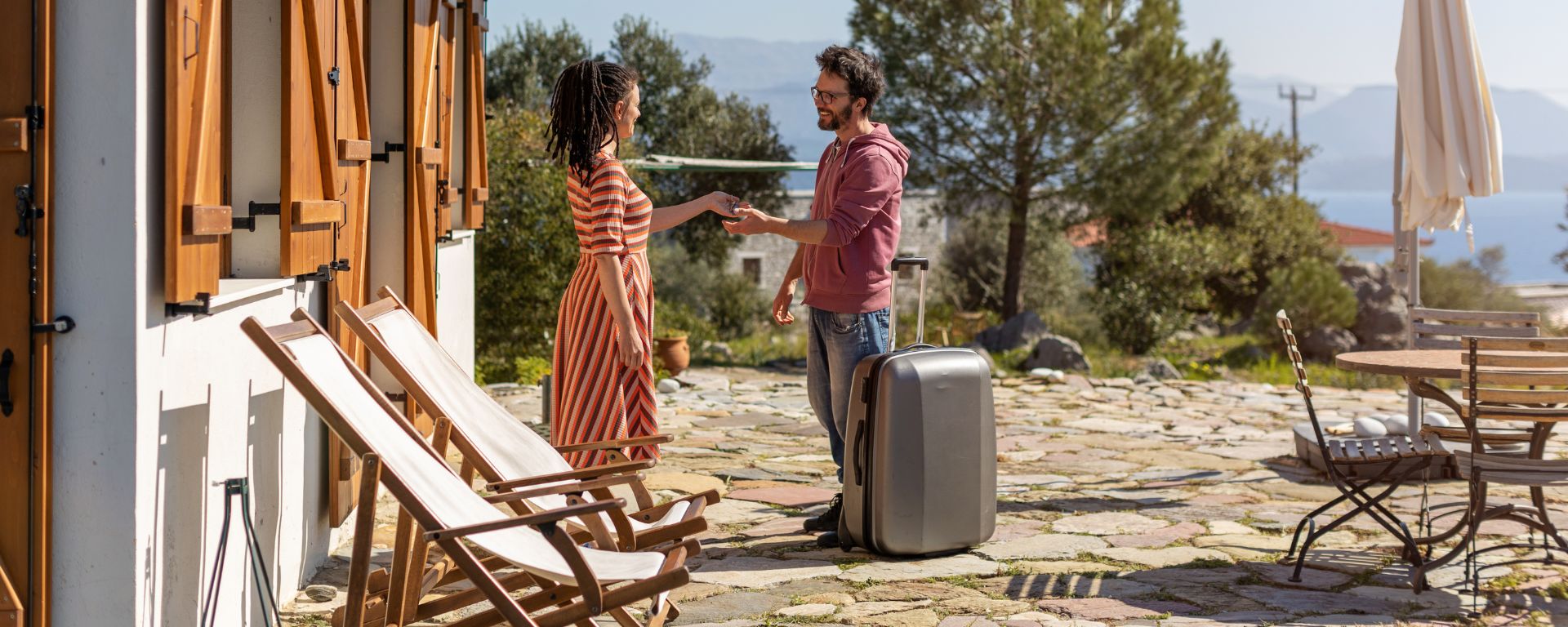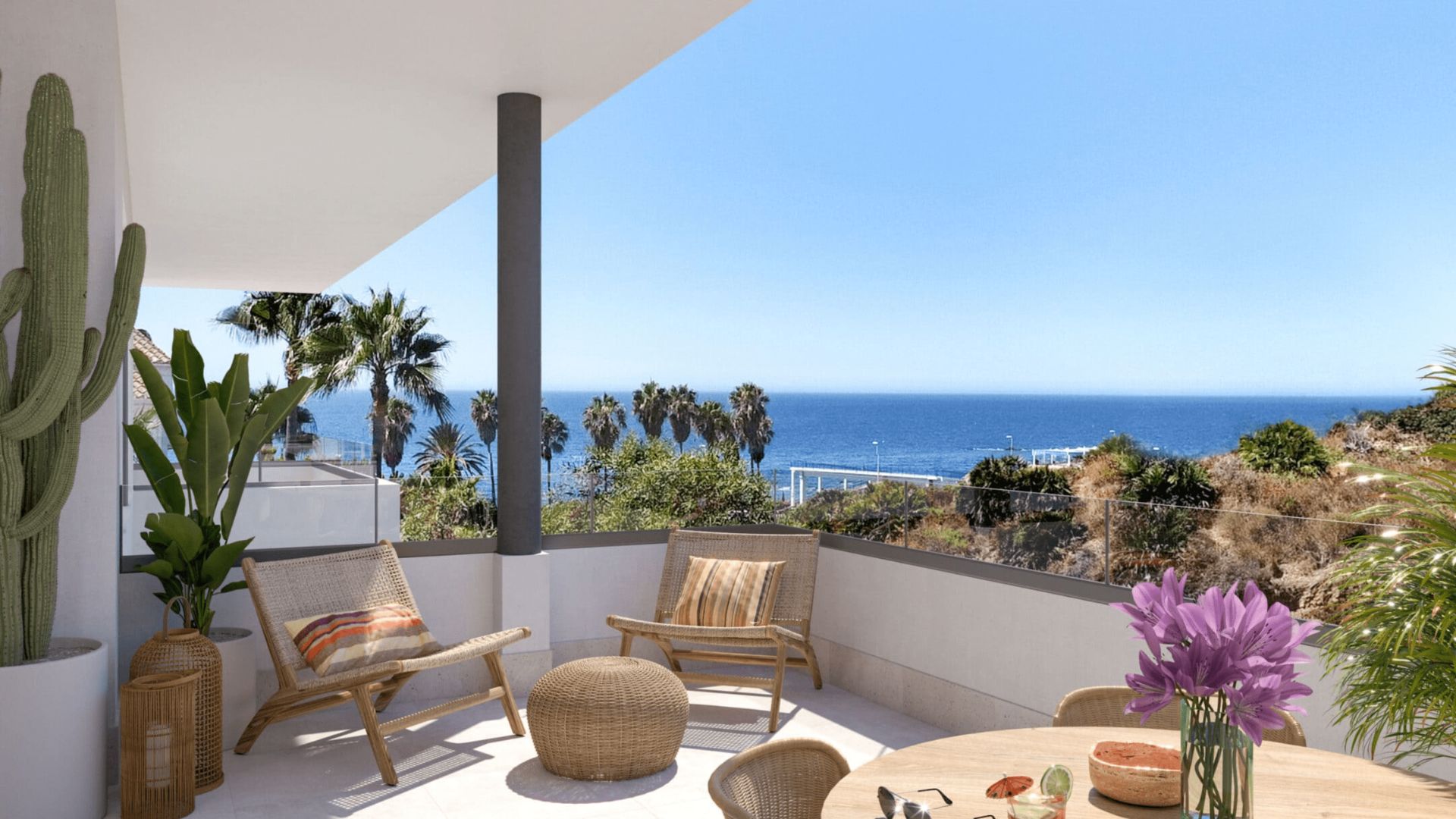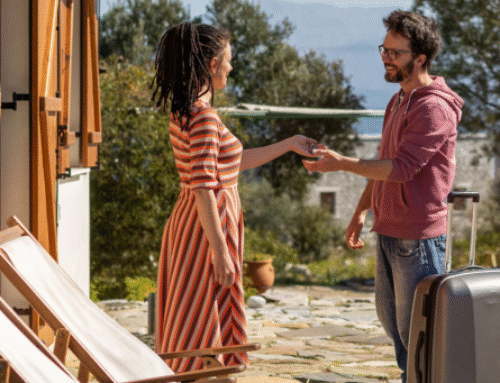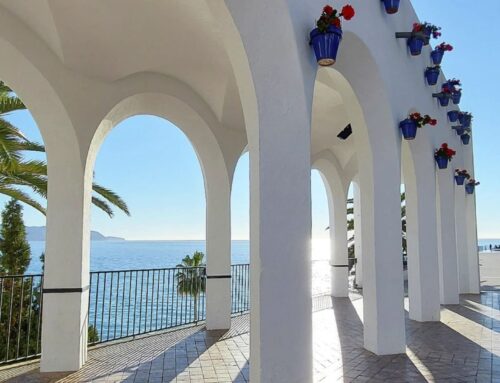Investing in Rental Property on the Costa del Sol: Short-Term or Long-Term – Which is Better?

Author: Eve Keerus-Jusupov, CEO of Merlis Homes SL.
Helping you navigate Costa del Sol property with confidence and peace of mind.
Have a question? Contact me via WhatsApp
Have you considered buying property on the Costa del Sol? There are several lucrative options – you can decide whether renting it short-term to tourists or long-term would be more beneficial. Or, you might prefer to keep it for personal use, allowing your family and friends to enjoy the Spanish sunshine whenever you please.
Continue reading to discover the perfect option for you!

Investing in rental property in Spain can be complex, particularly if you’re not familiar with the local market and regulations.
In the past three years, the rental market on the Costa del Sol has grown by more than 20%, and there remains a strong demand for rental properties.
Today’s key points are:
1. Real estate investments on the Costa del Sol: short-term vs. long-term rentals
2. Costa del Sol Areas and Seasonality
3. Who is your target audience?
4. Short-term vs. long-term rental periods
5. What changes in short-term rentals in Spain from April 3, 2025?
6. Do you manage your rental property yourself or use a full-service agency?
7. Building and diversifying your property portfolio
1. Real estate investments on the Costa del Sol: short-term vs. long-term rentals

When considering purchasing property for rental on the Costa del Sol, it’s essential to take into account the following perspectives regarding short-term and long-term rentals:
- Income. Short-term rentals can provide higher income during peak tourist seasons but are heavily dependent on seasonality and occupancy. The high season and holiday periods often yield up to four times the income compared to long-term rentals. Long-term rentals, however, offer stable and predictable income year-round.
- Regulations. Short-term rental regulations are becoming stricter, particularly in the areas between Málaga and Marbella. Long-term rentals face fewer restrictions, but it’s crucial to have a properly drafted rental contract to avoid the tenant’s right to stay for 5 or even 7 years.
- Management workload. Short-term rentals require more time and resources for guest management, cleaning, and continuous maintenance. Long-term rentals, on the other hand, demand less daily involvement.
- Tourism and demand. The income from short-term rentals depends heavily on tourist flow and reputation on platforms like Airbnb, Booking.com, and Vrbo. Long-term rentals rely more on local housing demand.
- Costs. Short-term rentals come with higher maintenance costs, including cleaning services and minor repairs. With long-term tenants, costs tend to be more predictable and less frequent.
- Taxation. Tax obligations for short-term rentals can be higher as they are often treated as business activities. Long-term rental taxation is simpler and offers certain tax advantages. The government favors long-term rental services.
- Investment flexibility. Short-term rentals allow flexibility for personal use of the property during certain periods. With long-term rental contracts, the property is less available for personal use.
- Social and community impact. Short-term rentals can cause dissatisfaction among local residents, especially in areas saturated with tourism, as they tend to drive up living costs. Long-term rentals are more in tune with the rhythm of the community and support local housing needs.
The Costa del Sol remains an attractive destination for property investors, mainly due to strong tourism figures before and after the COVID-19 pandemic.
In 2019, the region welcomed over 13 million tourists, and by 2023, that number reached a record-breaking 14 million, reflecting a 12% increase compared to 2022. Current projections show that 2024 will set yet another record.
Additionally, the Costa del Sol is known for its stable climate, with over 320 days of sunshine annually, and winter nighttime temperatures rarely dipping below 10°C.
In conclusion, the Costa del Sol has become a highly desirable international region due to its year-round demand, diverse lifestyle, and natural beauty. The area’s development is further fueled by international business investments, which have created thousands of new jobs in recent years. This combination makes the Costa del Sol an ideal place for both living and investing.
2. Costa del Sol Areas and Seasonality
If you’re considering purchasing property in Costa del Sol for rental purposes, it’s crucial to understand which areas offer the best opportunities, how market demand and supply affect your return on investment, and what seasonal changes might impact your rental income. It’s also important to differentiate between tourist preferences and local residents’ needs, which could shape your rental strategy.
What’s your choice – buying property for short-term rental to tourists, focusing on long-term tenants, or a hybrid approach where you use the property yourself during the winter and rent it out during the summer? Is it more important to meet your own needs or the needs of tourists?
But let’s start with the areas.
Currently, short-term rental offerings are restricted in Málaga and Fuengirola, with a major limitation being the requirement for a separate entrance, meaning the short-term tenant must not use a communal entrance but must have their own private access. As of October 2024, discussions are underway to extend this condition to other municipalities between Málaga and Marbella, including Marbella itself.
These areas remain attractive for short-term rentals, but finding suitable rental properties can be more challenging. In this case, opting for a townhouse, semi-detached house, or villa may be easier than finding an apartment with a separate entrance.
Best Areas for Short-Term Rentals in Costa del Sol
Marbella
Golden Mile – Property prices from €450,000 for apartments / €2 million for houses.
Marbella’s “Golden Mile” is one of the most famous luxury areas in Costa del Sol, known for its prestigious hotels, villas, and restaurants. The Golden Mile stretches from central Marbella to Puerto Banús. Property prices here have steadily increased due to high demand from international buyers. You’ll find both modern luxury villas and more traditional Spanish-style homes, often with sea views and exceptional interior design.
The area is also known for its elite clubs and five-star hotels.
Puerto Banús
Marina Banús – Apartment prices from €550,000.
The area around the marina is ideal for short-term rentals as it attracts wealthy visitors looking for a luxury lifestyle with proximity to the city center and the beach. Here, you’ll see luxury cars and yachts that rival those seen in films.
Nueva Andalucía – Property prices from €350,000 for apartments / €1.5 million for houses.
Known as “Golf Valley,” this area attracts golf enthusiasts and tourists seeking a luxurious lifestyle. There is high demand for short-term rentals here, especially during the summer months and golf-related events.
Note: Nueva Andalucía is very close to Puerto Banús.
Málaga City Center
Soho Málaga – Apartment prices from €350,000.
This is the city’s cultural district, often called the “art district.” It’s popular among young professionals and art enthusiasts looking for a unique and vibrant environment.
La Malagueta – Apartment prices from €450,000.
A beachfront area in Málaga known for its many apartments and luxury hotels. It’s an ideal location for short-term rentals, especially during the summer, when tourist numbers peak.
Estepona
Estepona Marina – Apartment prices from €300,000.
Estepona’s marina is a popular area with many restaurants, bars, and shops. There is high demand for short-term rentals due to the area’s attractiveness to tourists seeking a seaside holiday.
New Golden Mile – Property prices from €350,000 for apartments / €1 million for houses.
Located between Estepona and Marbella, this luxury area is home to many new, modern property developments. It attracts high-income vacationers looking for exclusive and contemporary properties.
Benalmádena
Benalmádena Pueblo – Apartment prices from €250,000.
This is the old town area, which has retained its traditional Andalusian charm. It’s popular among tourists seeking an authentic Spanish experience, yet the area also offers many modern amenities.
Arroyo de la Miel – Property prices from €220,000 for apartments / €500,000 for houses.
The center of Benalmádena, popular with families, offering various entertainment options. Short-term rentals are attractive here due to the nearby attractions and active lifestyle.
Fuengirola
Los Boliches – Apartment prices from €230,000.
A lively beachfront area of Fuengirola known for its vibrant atmosphere and excellent access to beachside bars and restaurants. This area is popular with both locals and international tourists.
Fuengirola Marina – Apartment prices from €250,000.
The marina area attracts tourists seeking a beach holiday and access to the sea. There is high demand for short-term rentals due to the proximity to the marina and lively nightlife.
These areas and their specific neighborhoods offer excellent short-term rental returns as they are popular destinations with consistent demand for high-quality accommodation.
In reality, many more areas could be mentioned, but the principle remains the same: the closer the property is to the sea and city centers, the higher the demand for short-term rentals. However, properties right by the beach come with higher prices compared to those located 2-3 kilometers inland.
Seasonal Changes and Their Impact
Seasonality always plays a role in the rental landscape. In many areas of Costa del Sol, short-term rental services are offered during the high season, while during the low season, tenants are accepted for longer periods, often renting by the month until the end of May when the high season starts again.
For example, during the low season, a four-bedroom house might rent for €5,000 per month, while during the high season, the rent for one week can be four times higher.
- Summer months (June – September) are the busiest in almost all areas due to warm weather and high tourist numbers.
- Holiday periods – Christmas, New Year, and Easter – also bring high demand in certain areas, especially Marbella, Puerto Banús, and Fuengirola.
- Málaga city center is active year-round due to its cultural and commercial significance.
It’s also important to note that October through May is an excellent period for golf enthusiasts, as the weather is cooler. Costa del Sol boasts more than 70 golf courses, and the houses and apartments near them are ideal accommodation for this target group.
3. Who is your target audience?
Who are all the people wanting to vacation on the Costa del Sol? Knowing your client makes it easier to speak directly to them.
Are they families, retirees, remote workers, pet owners? Here’s a general list 🙂
🌞 Sunseekers
They are looking for properties where they can enjoy Costa del Sol’s sunny climate. And they certainly can – with about 320 days of sunshine a year. You’ll see blue skies and yellow sunshine for months on end.
They prefer properties with large terraces, facing south or southwest, or beachfront properties where they can step outside and immediately start soaking up the sun. The Costa del Sol coastline stretches approximately 190 kilometers, from Nerja in the east to Sotogrande in the west. If your target audience is sun lovers, we can narrow down the search – proximity to the airport, number of bedrooms, budget range, terrace size, etc.
🏌️♂️ Golf Enthusiasts
Golfers who want to rent properties near golf courses. For them, it’s essential that the golf course feels like an extension of their home – a place where they can spend most of their time. For golf enthusiasts, golf isn’t just a hobby; it’s a part of their daily life.
They want to wake up in the morning, open the curtains, and be greeted by the sight of a beautifully maintained golf course. It’s equally important for them to enjoy this view in the evening, bringing them peace and joy. For them, the golf course is not just a place to play, but also a source of relaxation and beauty.
There are over 70 golf courses here, so there’s plenty of choice. Additional filters could include skill level (beginners vs. advanced) or whether they prefer coastal or inland courses.
🎉 Partygoers
Partygoers are energetic and social individuals looking for rental properties located at the heart of Costa del Sol’s vibrant nightlife and entertainment. It’s important that their home is close to popular bars, clubs, and restaurants so they can fully enjoy the lively and active nightlife the region offers.
They enjoy dancing at nightclubs, meeting friends at bars, and attending cultural events. They thrive on being where the action is, experiencing new and exciting moments. Notable areas include Puerto Banús.
🧘♂️ Peace Seekers
They look for properties that are far from the hustle and bustle of everyday life. They value quiet, natural beauty, and privacy. It’s important to them that their retreat is a peaceful haven where they can relax at their own pace and reflect on life and personal goals.
To find peace, you may need to head inland. In some cases, just 5 kilometers is enough, but sometimes you’ll need to go further. Again, specific criteria (distance from shops, restaurants, views, budget, number of rooms, and distance from the airport) will determine the right location.
4. Short-Term vs. Long-Term Rental Periods
This response is based on Decree 31/2024, dated January 29.
What is considered a short-term rental?
According to Decree 31/2024, dated January 29, short-term rentals in Andalusia are defined as property rentals for 60 days or less. If a property is rented to the same tenant for up to 60 consecutive days within a calendar year, it is classified as a short-term rental. For this, the property owner must apply for a tourism license and comply with the legal framework governing tourist accommodation.
What is considered a long-term rental?
Long-term rentals in Spain are divided into two distinct categories, both governed by the Spanish Rental Law (LAU), which sets out two types of rental agreements depending on the purpose of the rental.
Seasonal residence
- The tenant has a primary residence elsewhere. The agreement ends on the agreed date and is not automatically extended.
- These contracts are typically referred to as seasonal or medium-term leases.
- The terms of these contracts are flexible and depend on the agreement between the landlord and the tenant.
- These contracts do not provide the tenant with automatic legal protections, such as rent increase limits.
Primary residence
- If the tenant uses the property as their primary residence and has no verified residence in Spain or elsewhere, the minimum rental period required by law is 1 year.
- These contracts can be automatically extended for up to 5 years (if the property is owned by a private individual) or up to 7 years (if the landlord is a legal entity).
- Tenants have legal protections, including rent increase limitations and automatic annual lease renewals.
Seasonal residence rentals offer greater flexibility, with agreements that can end on a specific date without automatic extensions, depending solely on landlord-tenant negotiations.
Primary residence rentals, however, are more strictly regulated, providing tenants with significant legal protections, including capped rent increases and automatic lease renewals.
5. What changes in short-term rentals in Spain from April 3, 2025?
Ley de Propiedad Horizontal – the legal framework governing homeowners’ communities, setting out the rights and responsibilities of apartment owners.
- Each apartment will require a separate vote by the community to decide whether short-term rentals are permitted.
- The community bylaws must clearly outline whether, and under what conditions, new owners can offer short-term rentals.
- Communities will have the right to charge apartment owners who let their properties short-term up to 20% higher community fees.
Important!
- A community can vote to ban new owners from offering short-term rentals, but this does not affect existing landlords.
If you’re looking to rent out an apartment short-term, your buyer’s agent must check which communities allow it. This is often only confirmed by reviewing the community meeting minutes — seller and owner assurances alone are not reliable. Trust, but verify!
6. Do you manage your rental property yourself or use a full-service provider?
Many property owners start with great enthusiasm to manage their newly purchased property but may not realize the full extent of what property management involves. Read on to determine if you’re ready for this challenge or if you would rather leave it to the professionals.
Property Management and Maintenance
- Marketing and Advertising. This involves writing engaging content that attracts potential guests and creating high-quality photos and videos. Where do you want your property listed? Popular channels include Airbnb, Booking.com, and Vrbo.
- Managing Bookings. Accepting, confirming, and managing reservations through your chosen platforms, including your website, various booking platforms, WhatsApp, Messenger, and email.
- Optimizing Pricing. Dynamic pricing based on the season and market trends to maximize your revenue.
- Guest Check-In and Check-Out. Welcoming guests and coordinating their check-in and check-out. If you’re using key safes, how are the codes managed?
- Property Inspection and Maintenance. Inspecting the property’s condition before and after each guest’s stay and organizing necessary maintenance and quick repairs.
- Cleaning Services. Cleaning and changing bed linens after every guest, ensuring the property maintains high standards of cleanliness and hygiene.
- 24/7 Customer Support. Providing around-the-clock support to guests, addressing their questions, resolving issues, and handling emergencies.
- Convenience Services. Offering additional services to guests, such as meal preparation or booking excursions.
- Tax Filing and Reporting. Managing rental income taxation and filing tax declarations according to the law.
- Police Registration of Guests. Registering guests as required by Spanish law.
- Managing Reviews and Feedback. Collecting guest reviews, addressing feedback, and responding to reviews to maintain a positive reputation for the property.
These tasks are associated with short-term rentals on the Costa del Sol. If you don’t use a full-service provider—which usually costs 20-30% of revenue plus VAT—you’ll need to handle all these tasks yourself, including marketing, maintenance, guest management, accounting, and legal compliance.
Preparing Your Property for Short-Term Rental
Obtaining a tourism license is one of the first steps, but to qualify, your property must meet certain requirements, including having an occupancy permit (Licencia de Primera Ocupación) or a similar document, and written confirmation from the homeowners’ association that short-term rentals are allowed.
- Furnishing and Furniture Selection. Ensure the property is fully furnished and equipped with all necessary amenities, including furniture, linens, kitchenware, and electronics (such as a TV and Wi-Fi router).
- Necessary Appliances and Amenities. Equip the property with essential appliances, such as a washing machine, dishwasher, refrigerator, air conditioning, and heating systems, to meet guest expectations.
- Energy Efficiency Certificate (EPC). Obtain the mandatory energy efficiency certificate required for short-term rentals in Spain.
- Safety Standards. Install and check safety equipment, such as smoke detectors, fire extinguishers, and first aid kits, to ensure guest safety in compliance with local regulations.
- Rental License and Tourism Registration. Obtain the necessary rental license from the local municipality and register the property in the tourism registry to legally offer short-term rentals.
- Interior Design and Décor. Tailor the property’s design to appeal to short-term guests, using an appropriate color scheme, lighting, and overall aesthetics.
- Required Information and Documentation. Provide necessary instructions and manuals (for appliances, Wi-Fi, alarms, etc.) and house rules for guests.
- Photos and Virtual Tours. Create professional photos and virtual tours of the property for effective marketing across various rental platforms.
- Cleaning and Maintenance Plan. Organize regular cleaning and maintenance services to ensure the property is always in excellent condition and ready to welcome guests.
- Linens and Supplies. Stock the property with clean linens, towels, and essential supplies (such as soap, shampoo, and toilet paper) for each guest. Arrange for restocking after every stay.
These preparatory steps are essential for ensuring that the property meets all legal requirements and remains competitive in the short-term rental market. If you do not opt for a full-service provider, you will need to manage all of this yourself to keep the property fully ready for guests.
Preparing Your Property for Long-Term Rental
- Thorough Property Inspection and Maintenance. Before finding a long-term tenant, it’s essential to thoroughly inspect the property and carry out necessary maintenance or repairs to ensure it’s in good condition.
- Furnishing and Equipment Choices. Decide whether to rent the property furnished or unfurnished. If furnished, the furniture and appliances should be high-quality, durable, and functional.
- Tenant Selection Criteria. Determine your criteria for tenants—are families welcome? Are pets allowed? Is smoking permitted? Clear guidelines will help you target the right tenants and minimize risks.
- Energy Efficiency Certificate (EPC). Obtain the mandatory energy efficiency certificate required for all rental agreements in Spain.
- Drafting the Lease Agreement. Draft a long-term lease agreement that includes rent amount, payment terms, lease period, house rules, and responsibilities for repairs and maintenance. It’s advisable to seek professional legal advice to ensure all legal aspects are covered.
- Security Measures. Install and check security equipment, such as smoke detectors, fire extinguishers, and locks, to ensure tenant safety.
- Insurance. Ensure the property has adequate insurance coverage for potential damage caused by tenants. Tenant default insurance is also recommended.
- Managing Utility Contracts. Ensure all utility contracts (water, electricity, gas, internet) are up-to-date and, if necessary, transferred to the tenant’s name.
- Marketing and Advertising. Advertise the property on suitable platforms and channels to attract long-term tenants. This may involve posting ads on real estate portals, local newspapers, and social media.
- Property Handover Protocol. Prepare a handover document (inventory) that details the condition of the property, inventory, and appliances before the tenant moves in. This helps avoid disputes at the end of the lease.
- Furniture Removal if Needed. If the property is rented unfurnished or partially furnished, you may need to remove excess furniture.
These steps ensure your property is ready for long-term rental, with all legal and contractual aspects properly arranged.
7. Building and diversifying your property portfolio
How can we help you choose the right properties?
We leverage data from sources like Idealista, AirDNA, Booking.com, Airbnb, and market research agencies to give you insights into average occupancy rates, daily rental prices, and seasonal trends. This allows you to identify the areas with the highest potential for return on investment.
We guide you in selecting and analyzing properties, factoring in purchase price, renovation costs, and rental income projections.
For large investors, we can assist in building a diversified and profitable real estate portfolio.
What could your real estate portfolio include?
- Coastal vacation apartments (studios, 1-bedroom apartments, and 4+ bedroom units) with high tourist demand.
- Apartment complexes. For example, a fully renovated 9-apartment building in Las Lagunas is currently priced at €1,500,000 (October 2024).
- Hostels or boutique hotels for short-term rentals.
- Apartments for long-term rental, ideal for families or remote workers.
- New developments in early stages, offering lower prices with high future value.
- Properties in need of renovation, with potential for increased value after upgrades.
Interested in building your portfolio?
Contact us at eve@merlishomes.com to discuss the best options for your investment.



